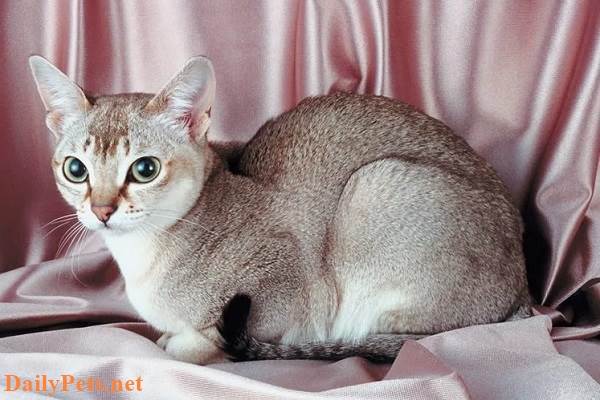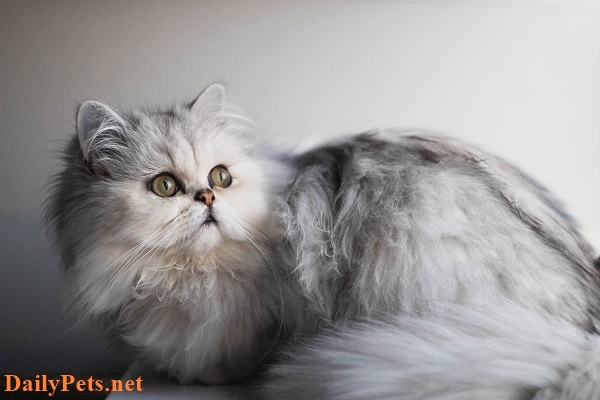Join DailyPets.net to learn about the Somali cat’s origin, characteristics, and care through this article.
The Origin and History of the Somali Cat
The Somali cat is often considered a long-haired version of the Abyssinian cat breed because of its similarity in appearance and personality. However, the history, origin & how this breed developed is still a mystery.
Some reports say they were crossed with many cat breeds during World War II to save the extinct Abyssinian cat. And among them were long-haired cats, which gave birth to today’s Somali cats.
However, the concept of the Somali cat breed developed in the United States in the 1960s by breeders Evelyn Mague and Charlotte Lohymeyer is still more accepted.
In the past, there have been cats considered long-haired Abyssinians, but the association that protects the breed firmly refuses to allow them to join the Abyssinian pedigree.
But Evelyn Mague saw the beauty and potential of these longhaired cats, so she carried out many breeding programs to achieve the Somali breed that it is today. But so far, which cat breeds are used for breeding has not been clarified; it is believed that there are Burmese and Russian blue cats.
Until 1979, the breed was recognized in North America. And so on until 1982, it was recognized in Europe, and finally, in 1991, it was completely accepted by most countries in the world.
In addition, the name Somali cat, given by Evelyn Mague, was also inspired by the Ethiopia-Somali conflict. Because Ethiopia was formerly known as Abyssinia & is adjacent to Somalia. The difference between the short-haired and the long-haired cat breeds is similar to the conflict between the two countries.
Appearance characteristics of Somali cats
Somali cats are medium-sized with a weight of 3kg – 5kg and a height of 14cm – 22cm. They have long, soft fur and come in 28 colors, including fawn, chocolate, red, cream, lilac, and silver. However, the fawn Somali cat is considered the most popular.

Somali Cat.
The Somali cat’s ears are relatively large, with almond-shaped eyes and an M tabby mark on the forehead. However, the Tabby coat color will not be accepted in the breed standard.
With a large, bushy tail and often with a black tip, it generally looks quite like a fox, so the Somali cat is also sometimes called the Fox cat.
Personality characteristics of Somali cats
The Somali cat has a curious, mischievous, active, and bold personality similar to the Abyssinian cat, so they are not suitable for owners who like to be quiet or do not have much time to play with cats.
They will play with other toys and dog or cat friends most of the day. Sometimes, you can feel like they never sleep.
Somali cats often follow their owners without toys or friends and constantly attract attention to find someone to play with.
Besides, Somali cats also love heights; they often look for places, such as the top of the refrigerator, the top of the wardrobe, and the top of the TV, to sit and observe everything around them.
In addition, although naughty, the Somali cat is still very gentle, so they will not hurt children or elders when living together.
How to take care of a Somali cat
Somali cat food
Somali cats are not picky eaters, so they will accept almost any food you offer as long as you ensure the food’s quality and avoid foods that are harmful to your cat.
If you have economic conditions, you can provide beef, pork, canned pate, soup, fish, etc. If not, you can buy fish to fry, liver to make pate, or meat. Chicken can be cooked for cats to eat with rice.
In addition, as a cat that likes to exercise, you do not have to worry about obesity. So make sure to give your cat enough 3 meals a day for them to grow in the healthiest way.
Care and hygiene for Somali cats
To keep the long coat of the Somali cat soft, smooth, and tangle-free, you need to work hard to brush the cat’s coat daily. You should invest in a dedicated comb to optimize the work, or when you are hugging your cat, it’s fine to use your hand to stroke their fur.
In addition, on hot days, you can trim the hair to help your cat feel less stuffy or stuffy. However, the cat’s hair should not be shaved.
In particular, you also need to get into the habit of bathing your cat periodically, at least once every 2-3 weeks. This way, the cat will always smell good, clean, and free from fleas.
Health care for Somali cats
The Somali cat is a healthy cat breed with few diseases. But they are also difficult to avoid some common natural diseases of cats, such as:
- Dental disease, periodontal disease
- Nervous syndrome: Cats lick their fur too much, causing hair loss or uncontrollable behavior
- The kneecap is misaligned
- Retinal atrophy
- Pyruvate kinase (PKD) deficiency: involved in the metabolism of sugar in the body, making cats more susceptible to anemia.
- Kidney amyloidosis
Therefore, you should take your cat to the veterinary clinic once a year for a health check. During the nurturing process, pay attention if they have unusual expressions.
How much does a Somali cat cost? Buy it where?
The cost of a Somali cat can vary widely depending on several factors, including the cat’s lineage, pedigree, coat quality, breeder reputation, and location. On average, you might expect to pay anywhere from $500 to $1500 for a Somali cat from a reputable breeder. Some particularly high-quality or show-quality cats might be priced even higher.
It’s important to remember that the initial cost of acquiring a cat is just one aspect of pet ownership. You should also consider ongoing expenses such as veterinary care, food, grooming, and other supplies. Additionally, consider adopting from shelters or rescue organizations, as this can be a more cost-effective option and also provides a loving home to a cat in need.





